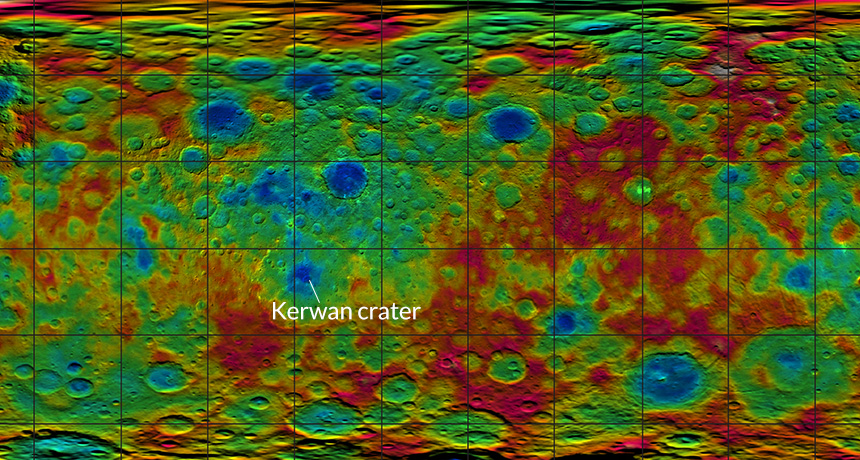Map of Ceres’ surface shows surprises
Clusters of craters, smooth plains raise questions about dwarf planet’s past

CRATER CROWD A map of Ceres based on images taken by the Dawn spacecraft shows the dwarf planet’s uneven distribution of craters. The terrain has about a 15-kilometer change in elevation (blue is low, red is high) and includes craters, such as Kerwan, that span nearly 300 kilometers.
JPL-Caltech/NASA, UCLA, MPS, DLR, IDA